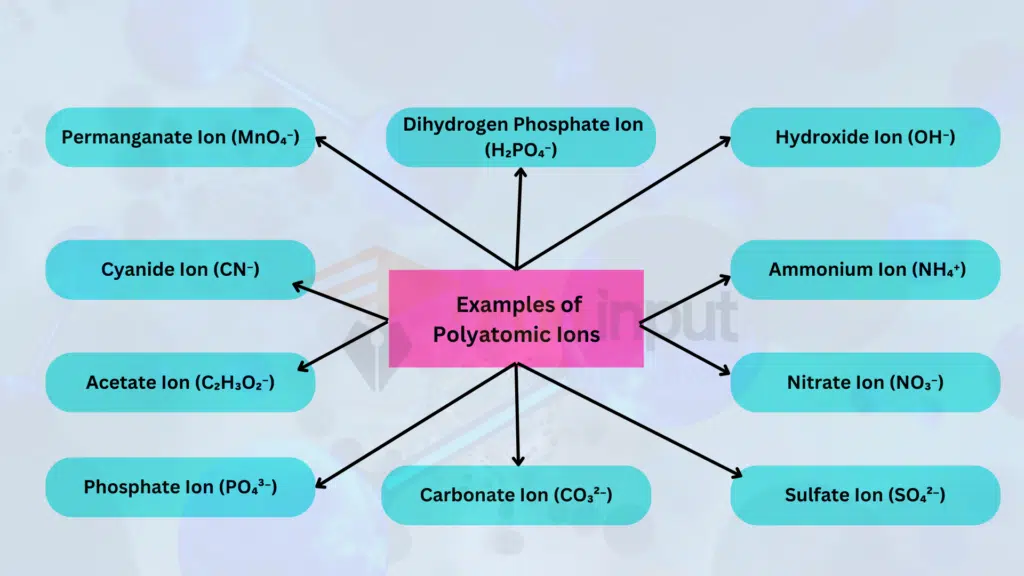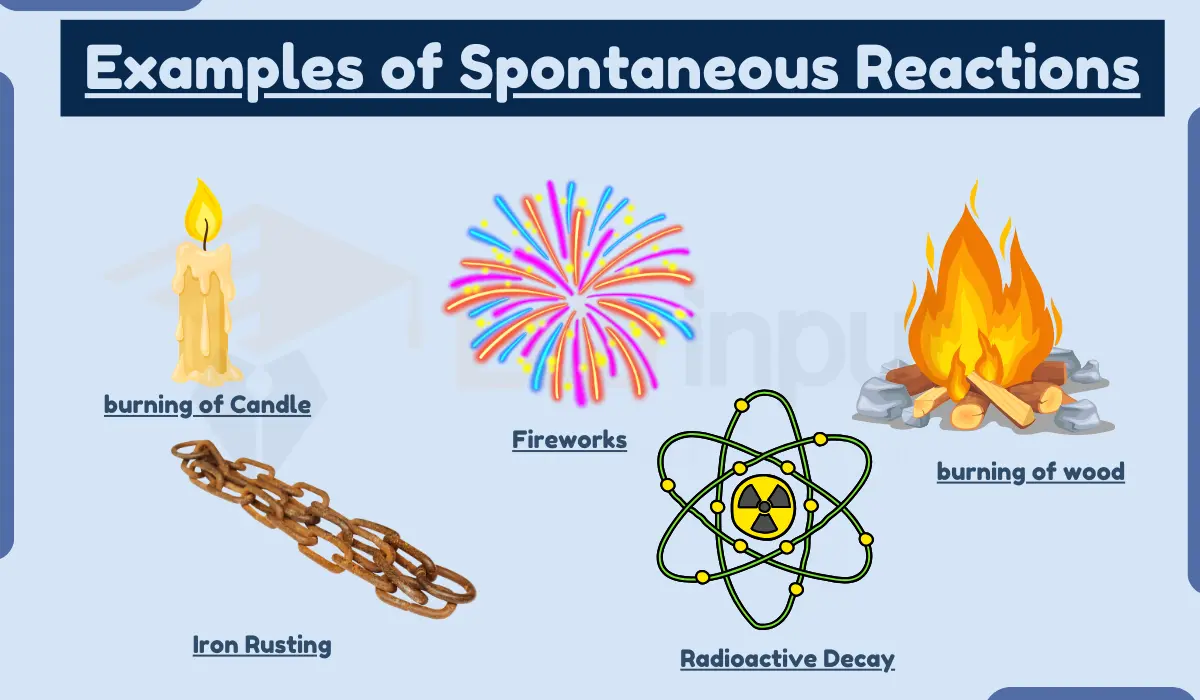10 Examples of Polyatomic Ions
Polyatomic ions are groups of atoms that carry a net electrical charge. These ions play a crucial role in chemistry, forming an integral part of various compounds and chemical reactions. In this article, we’ll delve into 10 different examples of polyatomic ions, examining their structures, charges, and common occurrences.
Examples of Polyatomic Ions
Here are 10 Examples of Polyatomic Ions:

1. Hydroxide Ion (OH⁻)
Comprising one oxygen atom and one hydrogen atom, the hydroxide ion carries a charge of -1. It is a fundamental polyatomic ion found in hydroxides, contributing to the properties of bases and influencing pH levels in solutions.
2. Ammonium Ion (NH₄⁺)
The ammonium ion is composed of four hydrogen atoms and one nitrogen atom, collectively carrying a charge of +1. Commonly encountered in salts like ammonium chloride, it contributes to the acidic properties of these compounds.
3. Nitrate Ion (NO₃⁻)
Consisting of one nitrogen atom and three oxygen atoms, the nitrate ion has a charge of -1. It is prevalent in nitrates, essential components of fertilizers and naturally occurring compounds in the nitrogen cycle.
4. Sulfate Ion (SO₄²⁻)
With one sulfur atom and four oxygen atoms, the sulfate ion carries a charge of -2. Found in various sulfates like calcium sulfate (gypsum), it plays a role in industrial processes and environmental chemistry.
5. Carbonate Ion (CO₃²⁻)
The carbonate ion, made up of one carbon atom and three oxygen atoms, has a charge of -2. It is a key component in carbonates, including calcium carbonate found in limestone and antacids.
6. Phosphate Ion (PO₄³⁻)
Containing one phosphorus atom and four oxygen atoms, the phosphate ion carries a charge of -3. It is critical in biological systems, forming the backbone of DNA and RNA.
7. Acetate Ion (C₂H₃O₂⁻)
The acetate ion consists of two carbon atoms, three hydrogen atoms, and two oxygen atoms, carrying a charge of -1. It is found in acetates, commonly used in the pharmaceutical and chemical industries.
8. Cyanide Ion (CN⁻)
Comprising one carbon atom and one nitrogen atom, the cyanide ion carries a charge of -1. It is notorious for its toxicity and is encountered in certain industrial processes.
9. Permanganate Ion (MnO₄⁻)
The permanganate ion, with one manganese atom and four oxygen atoms, carries a charge of -1. It is used as an oxidizing agent in chemical reactions and is involved in redox processes.
10. Dihydrogen Phosphate Ion (H₂PO₄⁻)
The dihydrogen phosphate ion consists of one phosphorus atom, four oxygen atoms, and two hydrogen atoms, carrying a charge of -1. It is an essential component in the regulation of pH in biological systems.





Leave a Reply